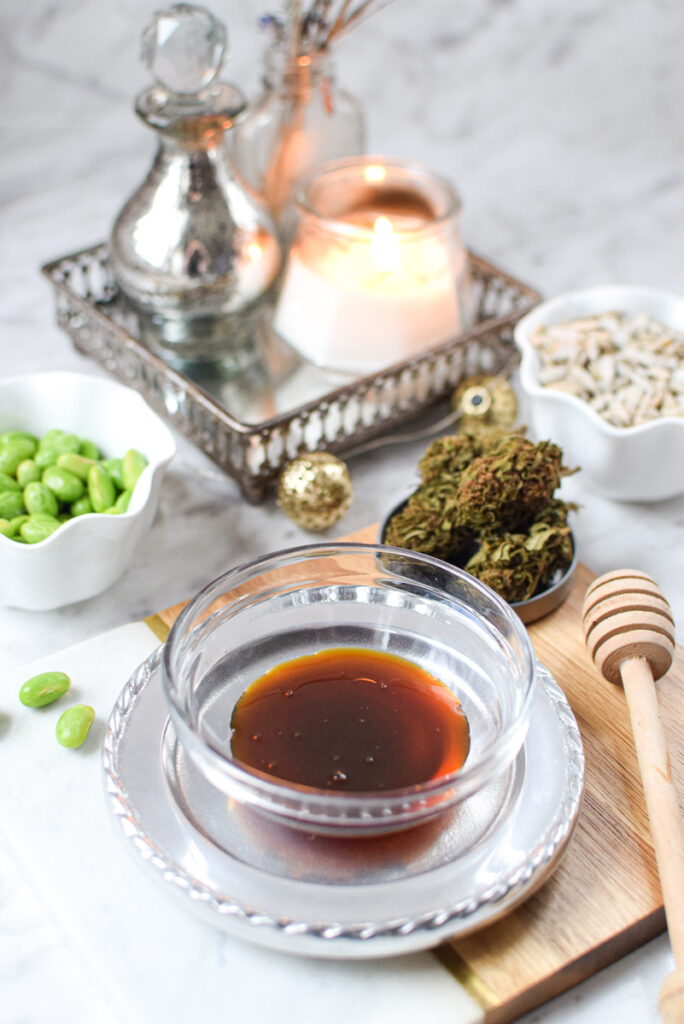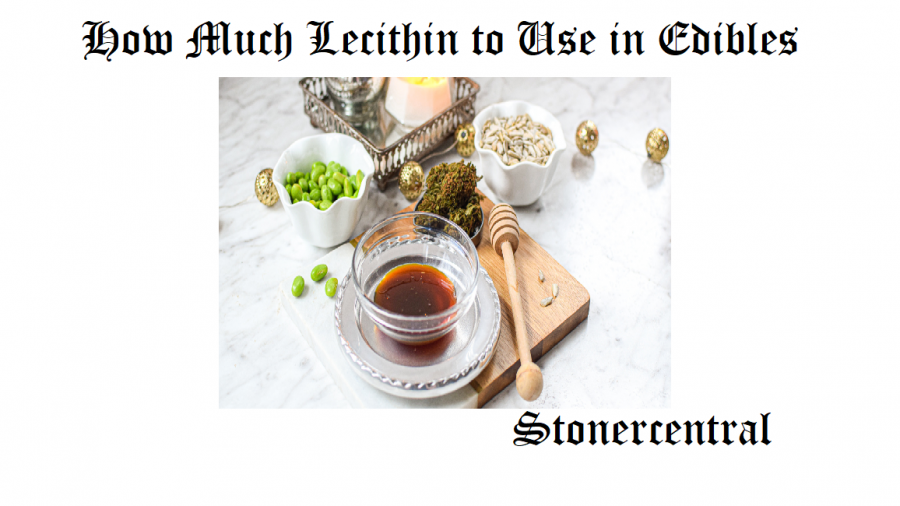Lecithin In Cannabis Edibles: Why You Need It
Lecithin is a phospholipid that can be found within eggs, avocados, soybeans, and sunflowers. The substance acts as a binding agent that keeps ingredients stuck together. It may even play a role in increasing the potency of edibles. We take a closer a look at what is going on.
Just like the process of growing cannabis plants, adding the flowers into food recipes and creating edibles is an artform. There are countless recipes out there now and almost any dish, whether sweet or savoury, can be infused with cannabinoids for either medicinal or recreational purposes. Making edibles isn’t always simple, especially for those cannabis enthusiasts who are new to the world of cooking. There are many ways to improve certain dishes and recipes, and factors such as flavour, texture, and presentation can be optimised in order to really make an edible experience fun and memorable. One secret weapon when it comes to baking with weed is the use of lecithin, an ingredient that can greatly improve the structural integrity of an edible, and may enhance the absorption of the prized cannabinoids within.
How Adding Lecithin Affects Your Cannabis Edibles
Many patients make their own edibles these days for a few reasons. It is much more cost effective for those on a tight budget as it makes your medicine go further. Many vape their cannabis bud and then use the by-product in their edibles. While the second use is not as potent, it can still provide medicinal benefits. Another reason to make your own edibles is to have control over what ingredients they contain. The majority of packaged edibles are sweet. For those who prefer a savory edible or are diabetic and need to monitor their sugar intake, making your own edible is your best option. Lastly, you can choose the strain, dosage of cannabis and delivery method to create your unique edible. You know exactly how much cannabis you are using and you can gauge the portion size that works best for your needs. This brings us to the focus of this article;

How Adding Lecithin Affects Your Cannabis Edibles
What is lecithin? It is an emulsifier, a substance that helps ingredients bind together. But it is also a phospholipid emulsifier. A phospholipid is a fat molecule which makes up cell membranes. Its function is to act as a barrier so that the emulsified product stays stable for a long time. The reason that lecithin makes such a good emulsifier is that it is suited to combining oil in water AND water in oil. Water and fats typically repel each other. Lecithin helps keep them consistently dispersed and bound together so that it facilitates an evener distribution of cannabis in your edible product. This will increase the likelihood that each portion contains about the same dosage of cannabis.
More importantly, lecithin improves bioavailability which is the degree and rate that the body can absorb and process the cannabinoids. You receive more medicinal benefits from the cannabinoids without increasing the amount of cannabis you use. Lecithin minimizes the long-acting effect edibles have by allowing a faster absorption. More THC will be metabolized by the body, making the psychotropic effects more intense. If you are interested in a more prolonged and gradual experience, do not use lecithin.
Sources of Lecithin…the good and the not so good
Let’s start with the lecithin that is very common but is NOT recommended; soy lecithin. It is considered lower quality and is highly processed, using the extraction process of hexane or acetone solvents. Another reason to avoid it is that soy can be pro-inflammatory and mimic estrogen.
The recommended sources are sunflower lecithin, egg yolks (unless you are vegan) and chocolate
Sunflower lecithin is highly recommended. It is cold pressed, similar to olive oil in its processing, raw, and chemical-free of harsh solvents. You can purchase it in liquid, granule or powdered form.
Eggs yolks are a good emulsifier. They do an adequate job of keeping fats and water based ingredients together.

Most chocolate contains lecithin, but not as much as eggs or sunflower lecithin. This explains why chocolate cannabis brownies have been a mainstay of edibles for so many decades.
Both eggs and sunflower lecithin contain choline, a vitamin-like, water-soluble essential nutrient. It is very important for liver function, normal brain development, nerve function, muscle movement, supporting energy levels and maintaining a healthy metabolism. Many Americans are not getting enough choline in their diets. Who knew? So, not only does lecithin makes your edible more potent and beneficial, it also provides an essential nutrient that you were probably lacking.
All you need is one teaspoon of lecithin per cup to increase the binding of THC-infused coconut oil to your water-based brownie batter. Make sure that all liquids are warm enough to stay liquid. This is particularly important when mixing infused cannabis oil with eggs and water when baking. Once you add your dry goods, mix with a “fold and press” motion. Then, mix again. You can also use a blender at high-speed in order to increase its emulsion properties. Lecithin also increases the shelf life of your edibles by preventing the separation of fats and water. There is less chance of the development of molds and mildews if you keep your edibles for any length of time.
How Lecithin & THC Work Together
Here’s an interesting and science-y way to look at what’s happening with lecithin in cannabis oil from the folks at THC Geek:
“Since lecithin contains phospholipids, the process of encapsulating the THC, and making it water-soluble and absorbable, can be completed prior to ingestion. This liposomal encapsulation process that lecithin facilitates, makes edibles especially potent, since the micelles that it creates serve as a disguise for the THC resin inside the body, allowing it to be absorbed more readily.
As if that were not enough to merit consideration, lecithin also serves as a surfactant (a compound that lowers surface tension), helping distribute the THC throughout the body more quickly.”
